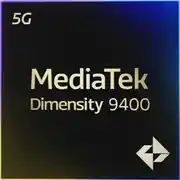Qualcomm Snapdragon 8 Plus Gen 1

Qualcomm Snapdragon 8 Plus Gen 1: Power and Efficiency in Your Pocket
April 2025
Smartphones have become an integral part of our lives, and their performance directly depends on the "heart" — the system on a chip (SoC). The Qualcomm Snapdragon 8 Plus Gen 1, introduced in 2022, remains a popular choice for flagship devices due to its balance of power and energy efficiency. Let’s explore why this processor is still worth attention in 2025.
1. Architecture and Technology Process: Innovations at the Nanometer Level
Cores and Frequencies
The Snapdragon 8 Plus Gen 1 features an 8-core architecture using a heterogeneous design:
- 1× Cortex-X2 (up to 3.2 GHz) — for resource-intensive tasks like gaming or rendering.
- 3× Cortex-A710 (up to 2.75 GHz) — ensure stable multitasking performance.
- 4× Cortex-A510 (up to 1.8 GHz) — energy-efficient cores for background processes.
This approach allows for dynamic load distribution, minimizing power consumption. The 4nm process from TSMC reduces heat generation and improves efficiency, which is critical for compact devices.
Adreno 730 GPU
The Adreno 730 GPU supports:
- Rendering at 4K at 60 FPS or QHD+ at 144 Hz.
- Technologies like Vulkan 1.1, OpenGL ES 3.2, and real-time ray tracing.
- Dynamic resolution scaling (Game Super Resolution) to optimize load.
Thanks to its improved architecture, the Adreno 730 is 30% more powerful than its predecessor (Adreno 730 in Snapdragon 8 Gen 1), which is especially evident in VR applications.
2. Performance: From Gaming to AI
Gaming
The processor handles AAA projects like Genshin Impact or Call of Duty: Mobile at maximum settings, maintaining stable 60–90 FPS. Support for Variable Rate Shading (VRS) reduces the load on the GPU, extending gaming time. In devices with active cooling (e.g., ASUS ROG Phone 7), frame rates can reach 120 FPS.
Multimedia
- Video decoding: 8K HDR10+, AV1, Dolby Vision.
- Audio: Snapdragon Sound with support for aptX Lossless codecs for wireless headphones.
- Displays: compatibility with panels up to 144 Hz and a resolution of 3200×1440 pixels.
AI Tasks
Utilizing the Hexagon DSP (7th generation), the processor accelerates:
- Photo processing (noise reduction, autofocus).
- Speech recognition (Google Assistant, Siri).
- Shooting modes with “artificial bokeh” or stabilization in 8K.
Power Consumption and Thermal Management
Thanks to the 4nm technology process, the chip is 15–20% more power-efficient than the Snapdragon 8 Gen 1. In smartphones with passive cooling (e.g., Xiaomi 13), battery life can reach 7–8 hours with active use. However, in intensive scenarios (e.g., 4K streaming), temperatures can rise to 42–45°C, requiring effective heat dissipation.
3. Integrated Modules: Speed and Global Connectivity
Snapdragon X65 5G Modem
- Download speeds: up to 10 Gbps (mmWave), 4.4 Gbps (Sub-6).
- Support for Dual-SIM 5G and global bands.
Wi-Fi and Bluetooth
- Wi-Fi 6E/7: speeds up to 3.6 Gbps, low latency in multi-device networks.
- Bluetooth 5.3: connects up to 4 devices simultaneously, improved energy efficiency.
Navigation
Support for GPS, GLONASS, Galileo, BeiDou, and QZSS provides accuracy within 1 meter even in densely built environments.
4. Comparison with Competitors: Who are the Leaders?
Apple A16 Bionic (iPhone 14 Pro)
- Geekbench 6 Single-Core: 1950 (17% higher).
- Multi-Core: 5100 (Apple’s advantage due to iOS optimization).
- GPU: Comparable to Adreno 730, but Metal API is better optimized for gaming.
MediaTek Dimensity 9200+
- Similar performance in AnTuTu (~1.1 million), but poorer optimization for gaming.
- Better energy efficiency in basic tasks.
Snapdragon 8 Gen 2
- 25% faster in AI tests thanks to a new Hexagon DSP.
- However, the 8 Plus Gen 1 remains relevant due to its price (devices starting from $800 versus $1000+ for Gen 2).
5. Use Cases: Who is This Chip For?
Gamers
Ideal for cloud gaming (Xbox Cloud Gaming) and mobile esports players. Models with LPDDR5X RAM (up to 16 GB) and UFS 4.0 storage are recommended.
Creatives
- Shooting in 8K HDR with simultaneous AI processing.
- Exporting 4K video in 2–3 minutes (depending on the app).
Everyday Tasks
Browsing, streaming, working with office applications — without lag or overheating.
6. Pros and Cons
Strengths:
- High performance in gaming and multimedia.
- Support for current communication standards.
- Energy efficiency for a flagship chip.
Weaknesses:
- Heating in extreme scenarios (requires good cooling).
- Lack of hardware optimization for some AI algorithms (e.g., Stable Diffusion).
7. Tips for Choosing a Device
- Cooling: Look for models with vapor chambers or active cooling (e.g., Nubia RedMagic 8 Pro).
- Display: AMOLED with a 120 Hz refresh rate for a smooth interface.
- Battery: At least 4500 mAh for comfortable use.
Typical 2025 devices on Snapdragon 8+ Gen 1:
- Budget flagships: OnePlus 11 ($799), Xiaomi 13 Lite ($849).
- Gaming smartphones: ASUS ROG Phone 7 ($999).
8. Conclusion: Is Choosing the Snapdragon 8+ Gen 1 Worth It in 2025?
This processor is an optimal choice for those looking for a balance between price and performance. It suits:
- Gamers who want to save money without sacrificing quality.
- Amateur photographers shooting in 8K.
- Travelers who value stable connectivity and navigation.
The main advantages are proven reliability, developer support, and the availability of devices. If you need the maximum power for AI or 8K streaming, consider the Snapdragon 8 Gen 3. But for most users, the 8+ Gen 1 remains a worthwhile choice even three years after its release.
Basic
GPU Specifications
Connectivity
Memory Specifications
Miscellaneous
Benchmarks
Compared to Other SoC
Share in social media
Or Link To Us
<a href="https://cputronic.com/soc/qualcomm-snapdragon-8-plus-gen-1" target="_blank">Qualcomm Snapdragon 8 Plus Gen 1</a>


